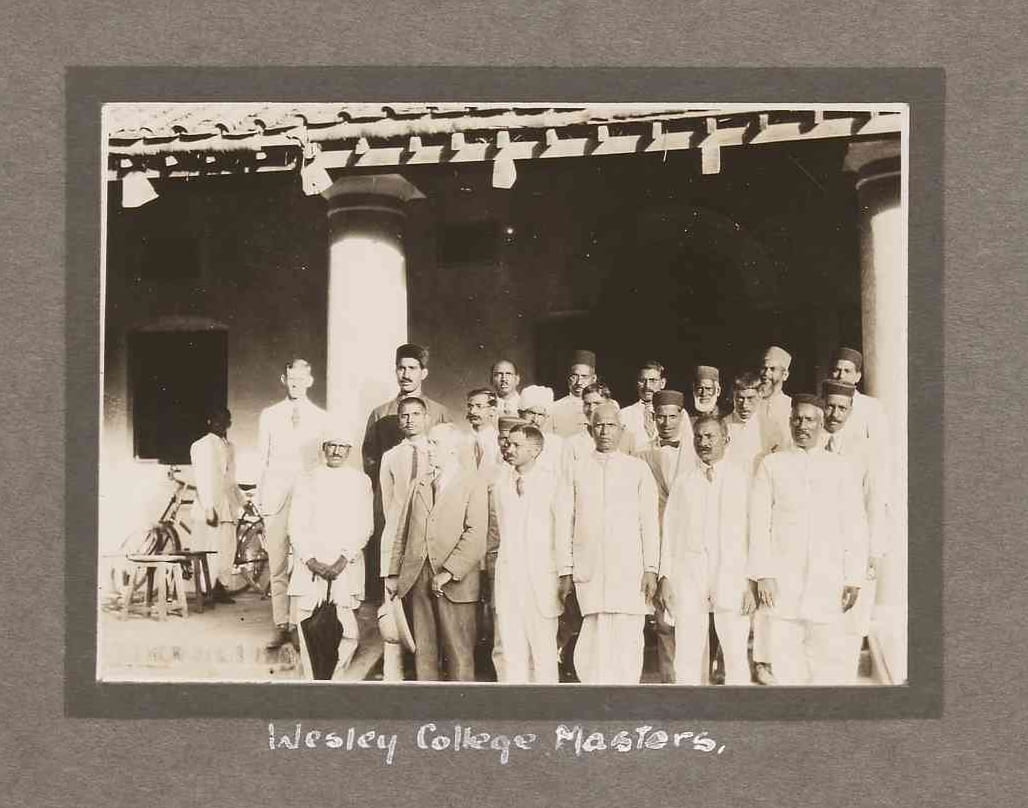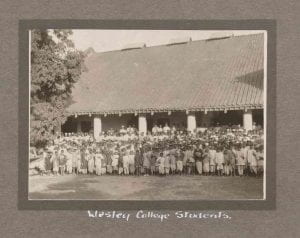
On Una Porter’s Photograph Album
Oscar T. Serquiña, Jr.

A personal photograph collection may reveal the roots and routes of its collector’s life. While its primary function is to collate representations of objects, persons, and events, a collection may also lay bare more than what is visible to the eye. Such is the uncontainable paradox of archival materials, especially photos, after all: on one hand, their enduring presence contracts, as well as suspends in motion, the humanity and entity they capture, but it also allows them to allude to the outside world to which they once belonged or continue to belong, on the other. Such is the case of Una Porter’s photo album in the University of Melbourne archives, which largely contains photographic souvenirs—ranging from portraits of individuals and groups to shots of sprawling landscapes and still lives, to documentations of ordinary objects and lush flora and fauna—from trips to countries such as China, Hong Kong, Japan, Egypt, and India. While some photos seem to have emerged from Porter’s missionary and philanthropic work, others look rather touristy, curious, and quotidian.
If anything at all, this compilation illustrates that during her prolific and mobile career as a psychiatrist, philanthropist, author, and an international leader of an earlier women’s movement, Porter did not only live a meaningful existence with others in and outside of Australia; she, too, saw the tensions between luxury and poverty, modernity and tradition, the West and the East. Although there is no way to determine whether Porter herself or someone else did the camerawork, this particular collection remains instructive in exemplifying the entanglements between an Australian woman of considerable capital and the other people in cultures and societies , oftentimes mired in poverty, exoticism, and decay, with which she interacted.

Porter’s photos, in this regard, may serve as pieces of social history and ethnography, even if they also very much come across as biographical evidences of a life in perpetual motion. They portray many intercultural interactions between White and non-White (particularly Indian) subjects. Evocations of a so-called modern, civilized life also abound. Some of the more interesting photos involve groups of young and mature Indian men collectively posing before a camera and foregrounding what supposedly is a school. One photo features old and middle-aged Indian men wearing either coats and ties or traditional Indian outfits, and sweepingly identified in the caption as Wesley College Masters. Notably seen in the first row is a White man—perhaps the class’s professor—clad in a formal suit. Another photo shows a much larger and more diverse crowd of children, now tagged in the caption as students of Wesley College. However, unlike the first image that clearly shows the visage of its objects of interest, this one renders the countenance of the young indiscernible. They are, to put it bluntly, reduced into black and white, a mere blur and abstraction. Indeed, this configuration between text and image easily aligns the visual materials on display with colonial logics of photographic practice. It almost immediately casts Porter either as a scopic eye beholding realities that are “out there,” or as a hand choreographing, if not curating, external entities and eventualities.
Despite the ethical implications that its form and contents raise, Porter’s photo collection introduces its viewers to the entwinements of history, class, travel, and education. It also brings to view the politics and ethics of witnessing, documenting, and disseminating the lived everyday lives of others. Furthermore, it brings up questions related to the privilege of proprietorship, the limits of representation, and the remainders of recordation. Although Porter’s photographs constitute an archive that may yield insights into the personal and professional career of one of Australia’s pioneering women in the last hundred years, the social relations they evoke are equally as instructive for historians. Porter’s photographs are just a small part of the vast amount of documents to be archived, explored, and digitized in the life of a woman who made her influence felt, and surely left palpable traces of it, within and beyond her homeland.
Oscar T. Serquiña, Jr. is a PhD student in Theatre Studies at the School of Culture and Communication of the University of Melbourne. His research revolves around pedagogical and performative sites of speech in the Philippines from the 20th- to the 21st-century.
Leave a Reply